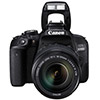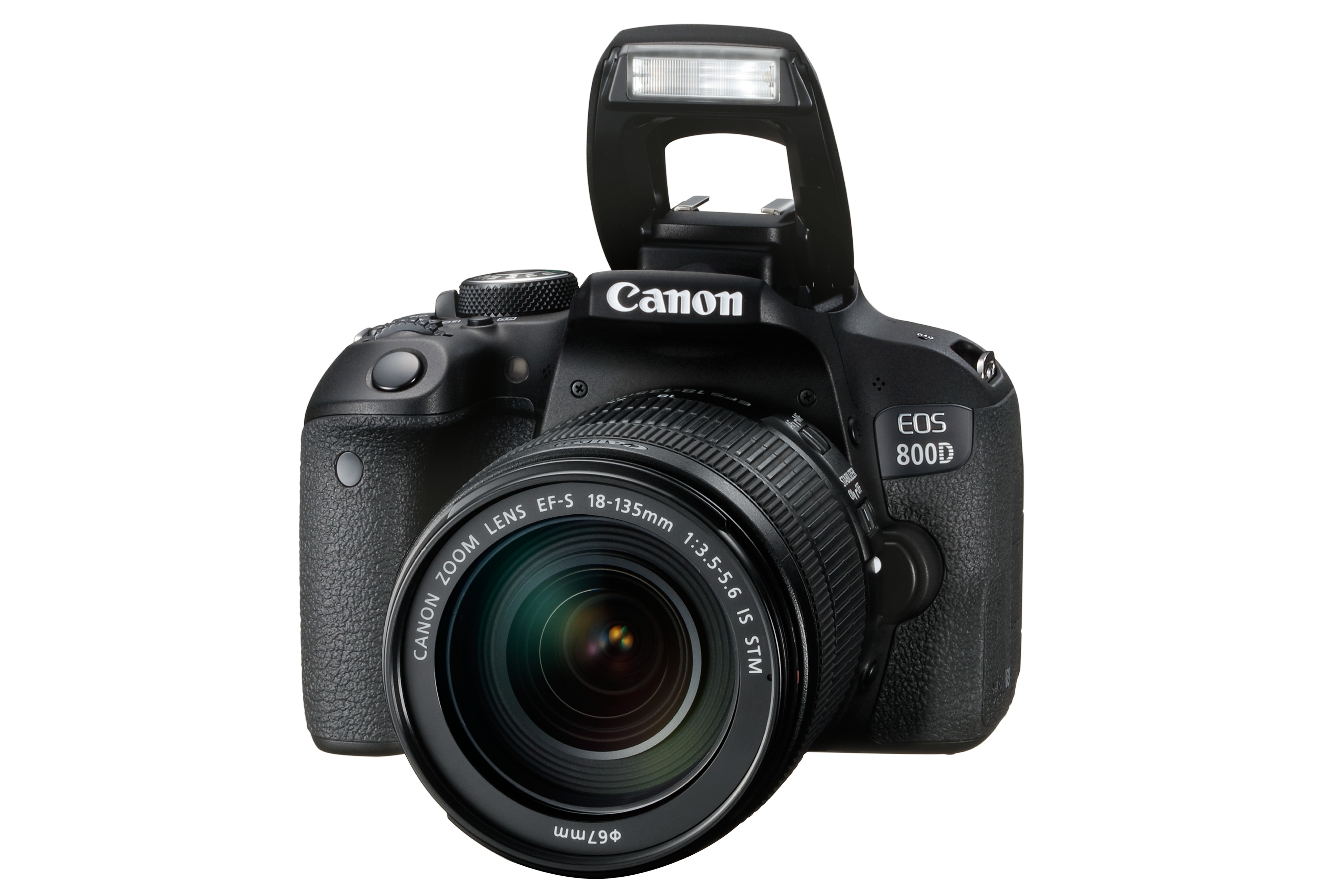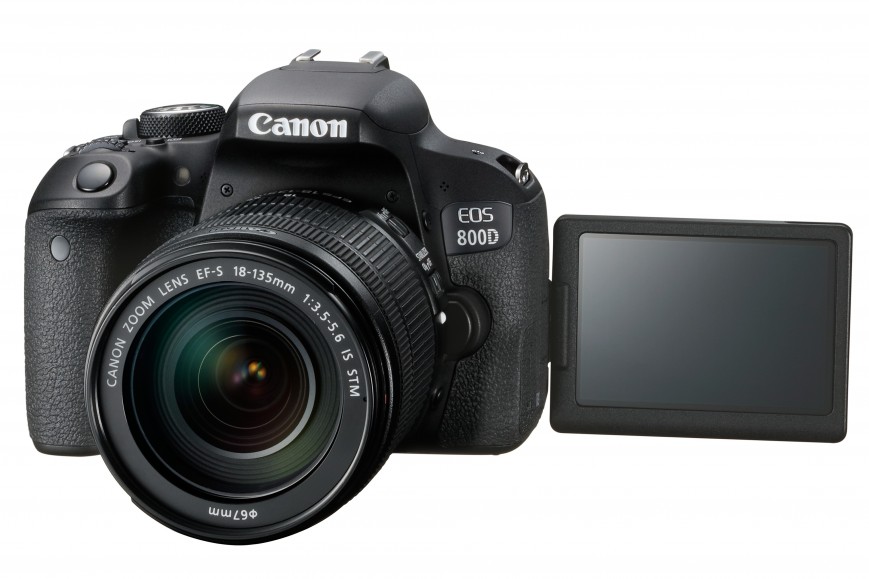
So-called upper-entry-level DSLRs from Canon and Nikon tend to offer many of the same niceties as their pricier siblings, but in smaller and more portable bodies. This makes them great for first-time users who want plenty of growing space as they gain confidence and skills, but also for users of more advanced bodies who may want a lightweight backup camera.
Here, we see how Canon’s latest EOS 800D fares against the Nikon’s D5600.
Design and ergonomics
The D5600 is the slightly more compact model of the two, with its shallower body allowing for a grip that provides more purchase than you might expect from such a camera aimed at this sector of the market. At just 415g without its battery or a memory card, the D5600 is also significantly lighter than the EOS 800D, that camera weighing 532g.
The EOS 800D’s grip is still a decent size for such a model, and this allows it to sport a wide range of well-spaced-out controls on top of it. This includes a vertically positioned command dial that’s operated with the index finger, together with separate controls for ISO, display and AF area selection mode. Nikon, meanwhile, opts for exposure-compensation and movie-record buttons in the same place, together with a horizontal dial that is operated by the thumb.
Canon EOS 800D
Nikon D5600
Which is better or worse is really a matter of personal preference, although Canon’s system does make better use of the thumb and index finger of the right hand, when you look at what controls are found on the rear plate (as many of these are adjusted using the front command dial).
The D5600 requires its controls to be changed more from its menus than its physical controls, although you can customise the Fn1 button around the front plate to work as an ISO button, instigate Wi-Fi or access another feature of your choice.
Canon EOS 800D
Nikon D5600
Both cameras have screens that can not only be pulled out from their bodies but also be operated by touch, and the two have a very similar resolution. The only difference of any significance here is that while the EOS 800D’s measures 3 inches in size, the D5600’s is a slightly larger 3. 2 inches.
Both also have pentamirror viewfinders with approx. 95% scene coverage and 0. 82x magnification, although the D5600’s 17mm eyepoint is slightly shorter than the EOS 800D’s 19mm.
Image Quality
Both cameras employ 24. 2MP APS-C-sized sensors, with Canon’s version paired up with its latest DIGIC 7 processor and Nikon’s working with the Expeed 4 engine.
Canon’s sensor provides a native range of ISO 100-25,600, and an extension setting equivalent to ISO 51,200 on top of this, while Nikon's simply offers a native range that runs from ISO 100-25,600.
Canon EOS 800D
Nikon D5600
Special Features
At least on paper, the EOS 800D’s AF system appears to be the more capable of the two. Its 45-point AF system is entirely cross-type for enhanced accuracy and speed, while its working range goes right down to -3EV.
By contrast, the D5600’s 39-point AF system only has nine cross-type sensors, and its working range only goes as low as -1EV.
Canon EOS 800D
Nikon D5600
However, both cameras are equipped with AF-assist lamps on their front plates, which lend a hand when autofocusing in more problematic lighting conditions.
Another slight advantage for the EOS 800D is that it’s able to offer a slightly speedier burst mode of 6fps, next to the D5600’s 5fps.
Both models have Wi-Fi, NFC and Bluetooth on board, and the two are able to maintain a constant connection to a smart device for easy image transmission.
Video Quality
The two are pretty evenly matched when it comes to their video options. Neither camera offers 4K video recording – instead, both max out at Full HD recording in a choice of frame rates to 50/60p. Nikon stores files in the MOV container while Canon opts for MP4, but both make use of the H. 264 codec.
Canon EOS 800D
Nikon D5600
Should you be unsatisfied with audio quality on either model, you can attach an external microphone through each camera’s 3. 5in port. One thing you can't do on either model, however, is monitor audio through headphones as neither provides a port for this.
While the kit lenses supplied with each camera employ optical image stabilisation, the EOS 800D is one of the first models in the line to make use of Movie Electronic IS, which provides electronic image stabilisation over five axes.
Conclusions
Being the slightly newer model of the two, and more of a step up from previous models by comparison, the EOS 800D is perhaps a little stronger in its spec sheet than the Nikon D5600. In fact, given the small handful of changes Nikon made over the D5500 for this latest model, it may be worth examining whether the older D5500 is better suited to your needs, given that it's still available for a little less outlay.
The EOS 800D is pricier than the D5600, but its advantages include a better-specified AF system, a faster burst rate and Movie Electronic IS. The D5600, however, comes out on top with the size of its LCD screen and the overall size and weight of its body. Based on features alone the EOS 800D comes out on top, but if you throw price into consideration the two are tied.
. digitalrev.com2017-4-3 03:00










